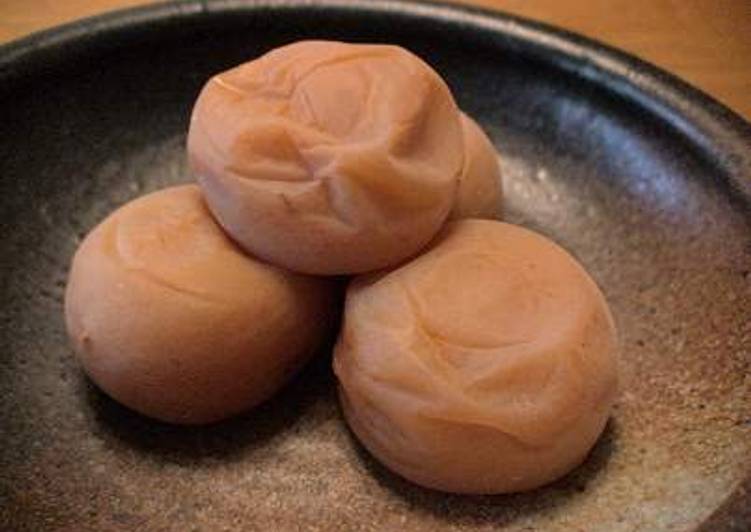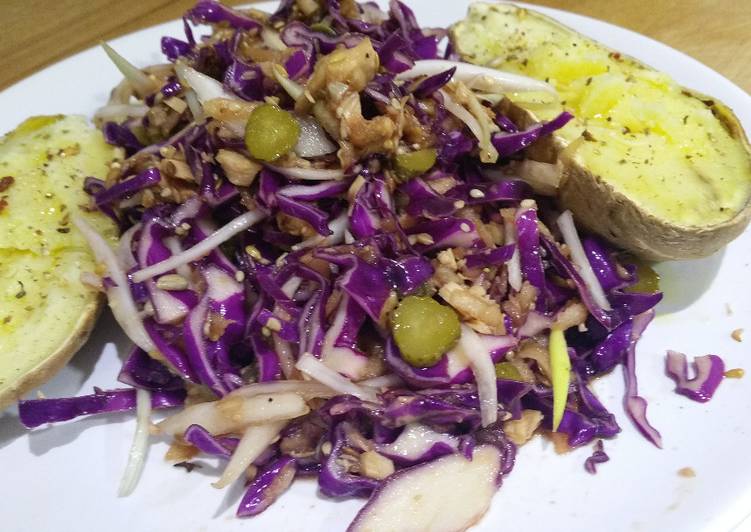
Hello everybody, I hope you’re having an amazing day today. Today, I will show you a way to prepare a special dish, reduced-sodium umeboshi. It is one of my favorites. For mine, I’m gonna make it a bit tasty. This is gonna smell and look delicious.
Traditional (non-reduced sodium versions) umeboshi are roughly one quarter salt. Homemade umeboshi is so much more delicious than store bought, so they are worth the effort. In Japan, umeboshi are always made in mid to late June, because that's when the ume plums are ready.
Reduced-Sodium Umeboshi is one of the most well liked of current trending foods on earth. It’s enjoyed by millions daily. It’s simple, it’s fast, it tastes yummy. Reduced-Sodium Umeboshi is something that I’ve loved my entire life. They are nice and they look fantastic.
To begin with this recipe, we have to prepare a few components. You can have reduced-sodium umeboshi using 3 ingredients and 12 steps. Here is how you can achieve it.
The ingredients needed to make Reduced-Sodium Umeboshi:
- Prepare Nanko-ume plums
- Prepare Salt
- Take White liqueur
The umeboshi plums have an alkalizing effect on the body, as both the shiso leaves, the citric acid and the fermentation process form a triple-punch of health benefits that help to combat and eliminate. How To Make Umeboshi-Japanese Salt Plums Umeboshi from Apricots Umeboshi often translated into English as Japanese Salt Plums. You might be getting more sodium than you need, even if you never pick up the salt shaker.
Instructions to make Reduced-Sodium Umeboshi:
- Rinse the ripe Nanko-ume plums really well. Drain, and remove the stem ends. There's no need to soak the extra ripe. Nanko-ume plums to remove their bitterness.
- Put the ume plums in a bowl, and spray with the white liqueur using a mister. Add half of the salt, and roll the ume plums around to coat in the salt.
- Put the ume plums into a sterilized storage jar, and add the remaining salt.
- The weight should be 1-2 kg. If you are using a storage jar, put water in a double-layered plastic bag to make a weight since it's easy to adjust.
- Store in a cool dark place. Once the liquid comes up, reduce the weight by half. If you want to add shiso leaves, add them here.
- After 20 days, dry the umeboshi in a sunny place for 3 days. Once they are dry, store them in a container.
- "How to Dry Umeboshi", "How to pickle red shiso"
- "Chicken Breast and Mitsuba with Umeboshi Sauce"
- "My Family's Pickled Plums and Bonito Flakes" - - https://cookpad.com/us/recipes/144177-my-familys-pickled-plums-and-bonito-flakes
- "Sweet Onions with Ume & Mayonnaise" - - https://cookpad.com/us/recipes/143306-sweet-onions-with-umeboshi-mayo-sauce
- "Spring Rolls with Chicken Breast and Shiso". - - https://cookpad.com/us/recipes/144176-easy-spring-rolls-with-chicken-breast-and-shiso
- If you use fully ripened Nanko-ume, you can make umeboshi without using a weight. But if you don't add a sufficient amount of salt, the liquid won't come up quickly enough, and this can cause problems.
How strong is the science on the benefits of sodium reduction? Umeboshi with a sweet taste that everyone loves. Good for pasta and toast (with cheese), too. A wide variety of reduced sodium options are available. Umeboshi Paste or Umeboshi Vinegar is great in this Corn Souffle Dish.
So that’s going to wrap this up for this exceptional food reduced-sodium umeboshi recipe. Thanks so much for your time. I’m sure that you will make this at home. There’s gonna be more interesting food in home recipes coming up. Remember to bookmark this page on your browser, and share it to your loved ones, friends and colleague. Thanks again for reading. Go on get cooking!


